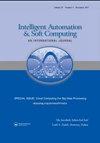低成本自主学习和建议智能家居自动化系统
IF 2
4区 计算机科学
Q2 Computer Science
引用次数: 2
摘要
在当今世界,我们比以往任何时候都更着迷于智能自主设备,它们使我们的生活更安全、更舒适。有助于减少能源消耗的设备也受到高度赞赏,但往往相当昂贵。这种背景有利于开发具有节能潜力和低价格的自主智能家居自动化系统(SHAS),使其得到广泛应用。本文介绍了这种基于低成本微控制器的自主SHAS的设计和原型实现,该系统可以学习居民的工作时间表,并集成各种传感器和执行器来自动控制灯光、温度、湿度和电源插座。拟议中的自动化系统还可以监控家庭环境,以发现潜在的节能机会、气体泄漏或未经授权的进入。为了提高系统的可靠性,并限制信号干扰的风险,本设计采用有线模块间通信方式。为了提高家庭的安全性,增加了个人识别号码(PIN)保护和全球移动通信系统(GSM)通信,使拟议的系统设计与其他无线方案相比更不易受到网络攻击。详细介绍了该系统的软硬件架构、样机测试结果和成本分析,验证了该系统作为自主智能家居自动化系统的设计和高效运行。本文章由计算机程序翻译,如有差异,请以英文原文为准。
Low Cost Autonomous Learning and Advising Smart Home Automation System
In today’s world, more than ever before, we are fascinated and drawn towards smart autonomous devices that make our lives safer and more comfortable. Devices that aid in reducing our energy consumption are also highly appreciated but often quite expensive to buy. This context is favorable for developing an autonomous smart home automation system (SHAS) with energy-saving potential and low price, making it widely accessible. This paper presents the design and prototype implementation of such a low-cost micro-controller based autonomous SHAS that learns the resident’s work schedule and integrates a wide array of sensors and actuators to automatically control the lights, temperature, humidity and power sockets. The proposed automation system also monitors the home environment for potential energy-saving opportunities, gas leaks, or unauthorized entry. For reliability purposes and to limit the risk of signal interference, the proposed system design uses a wired inter-module communication method. To enhance the home’s security, both personal identification number (PIN) protection and Global System for Mobile Communications (GSM) communication are added, making the proposed system design less vulnerable to cyberattacks when compared to other wireless alternatives. The hardware and software architectures, the prototype test results and the cost analysis are presented in detail, validating the system’s design and efficient operation as an autonomous smart home automation system.
求助全文
通过发布文献求助,成功后即可免费获取论文全文。
去求助
来源期刊

Intelligent Automation and Soft Computing
工程技术-计算机:人工智能
CiteScore
3.50
自引率
10.00%
发文量
429
审稿时长
10.8 months
期刊介绍:
An International Journal seeks to provide a common forum for the dissemination of accurate results about the world of intelligent automation, artificial intelligence, computer science, control, intelligent data science, modeling and systems engineering. It is intended that the articles published in the journal will encompass both the short and the long term effects of soft computing and other related fields such as robotics, control, computer, vision, speech recognition, pattern recognition, data mining, big data, data analytics, machine intelligence, cyber security and deep learning. It further hopes it will address the existing and emerging relationships between automation, systems engineering, system of systems engineering and soft computing. The journal will publish original and survey papers on artificial intelligence, intelligent automation and computer engineering with an emphasis on current and potential applications of soft computing. It will have a broad interest in all engineering disciplines, computer science, and related technological fields such as medicine, biology operations research, technology management, agriculture and information technology.
 求助内容:
求助内容: 应助结果提醒方式:
应助结果提醒方式:


